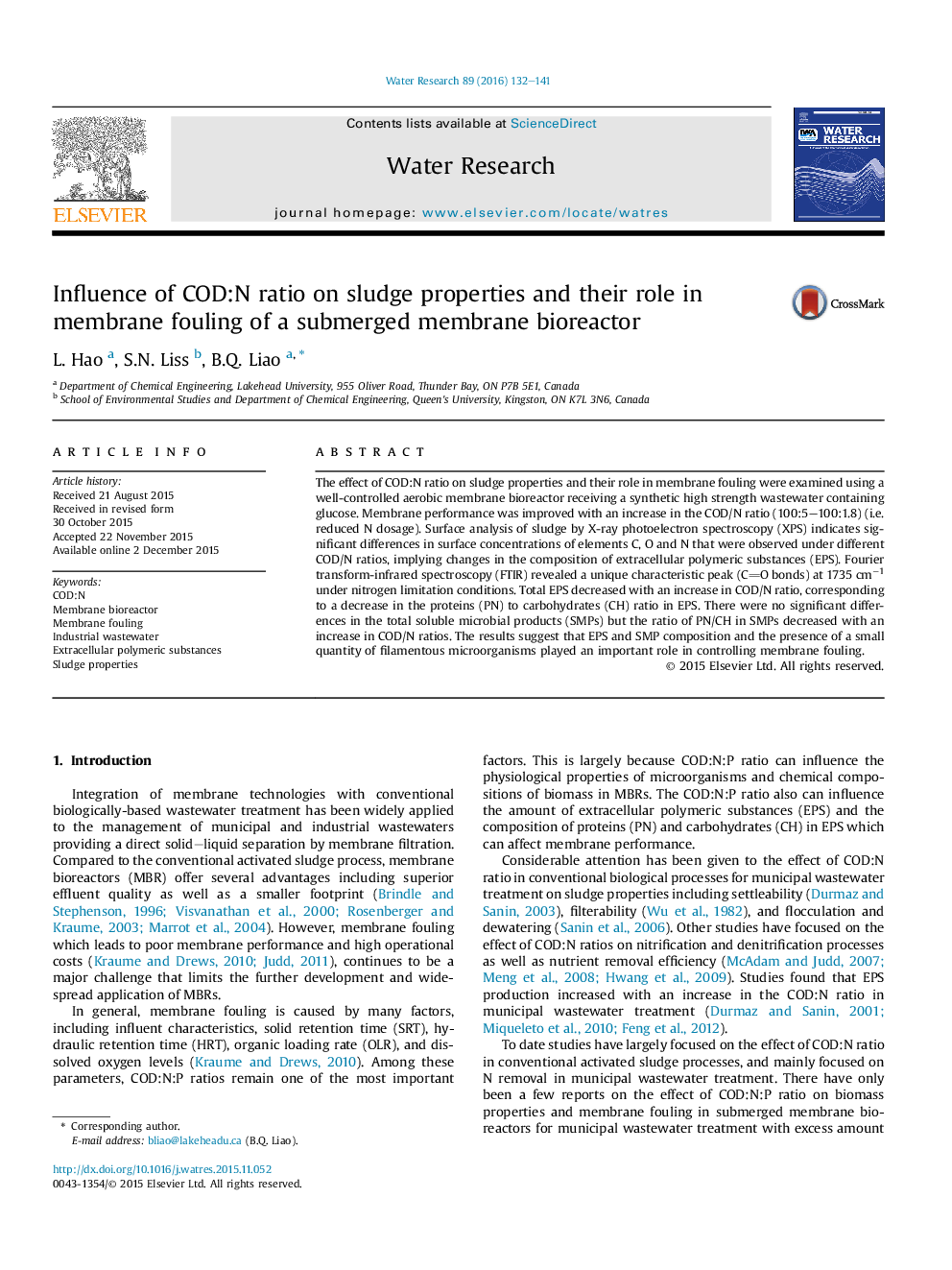| کد مقاله | کد نشریه | سال انتشار | مقاله انگلیسی | نسخه تمام متن |
|---|---|---|---|---|
| 4481026 | 1623079 | 2016 | 10 صفحه PDF | دانلود رایگان |

• An increase in COD:N ratio led to improved membrane performance.
• Surface concentrations of elements O and N and C bonds are different under different COD:N ratios.
• Bound EPS/SMP composition is more important than the quantity in controlling membrane fouling.
• The presence of a small quantity of filamentous microorganisms led to improved membrane performance.
• A characteristic peak of FTIR at 1735 cm−1 was observed for sludge under N deficiency.
The effect of COD:N ratio on sludge properties and their role in membrane fouling were examined using a well-controlled aerobic membrane bioreactor receiving a synthetic high strength wastewater containing glucose. Membrane performance was improved with an increase in the COD/N ratio (100:5–100:1.8) (i.e. reduced N dosage). Surface analysis of sludge by X-ray photoelectron spectroscopy (XPS) indicates significant differences in surface concentrations of elements C, O and N that were observed under different COD/N ratios, implying changes in the composition of extracellular polymeric substances (EPS). Fourier transform-infrared spectroscopy (FTIR) revealed a unique characteristic peak (CO bonds) at 1735 cm−1 under nitrogen limitation conditions. Total EPS decreased with an increase in COD/N ratio, corresponding to a decrease in the proteins (PN) to carbohydrates (CH) ratio in EPS. There were no significant differences in the total soluble microbial products (SMPs) but the ratio of PN/CH in SMPs decreased with an increase in COD/N ratios. The results suggest that EPS and SMP composition and the presence of a small quantity of filamentous microorganisms played an important role in controlling membrane fouling.
Figure optionsDownload high-quality image (172 K)Download as PowerPoint slide
Journal: Water Research - Volume 89, 1 February 2016, Pages 132–141